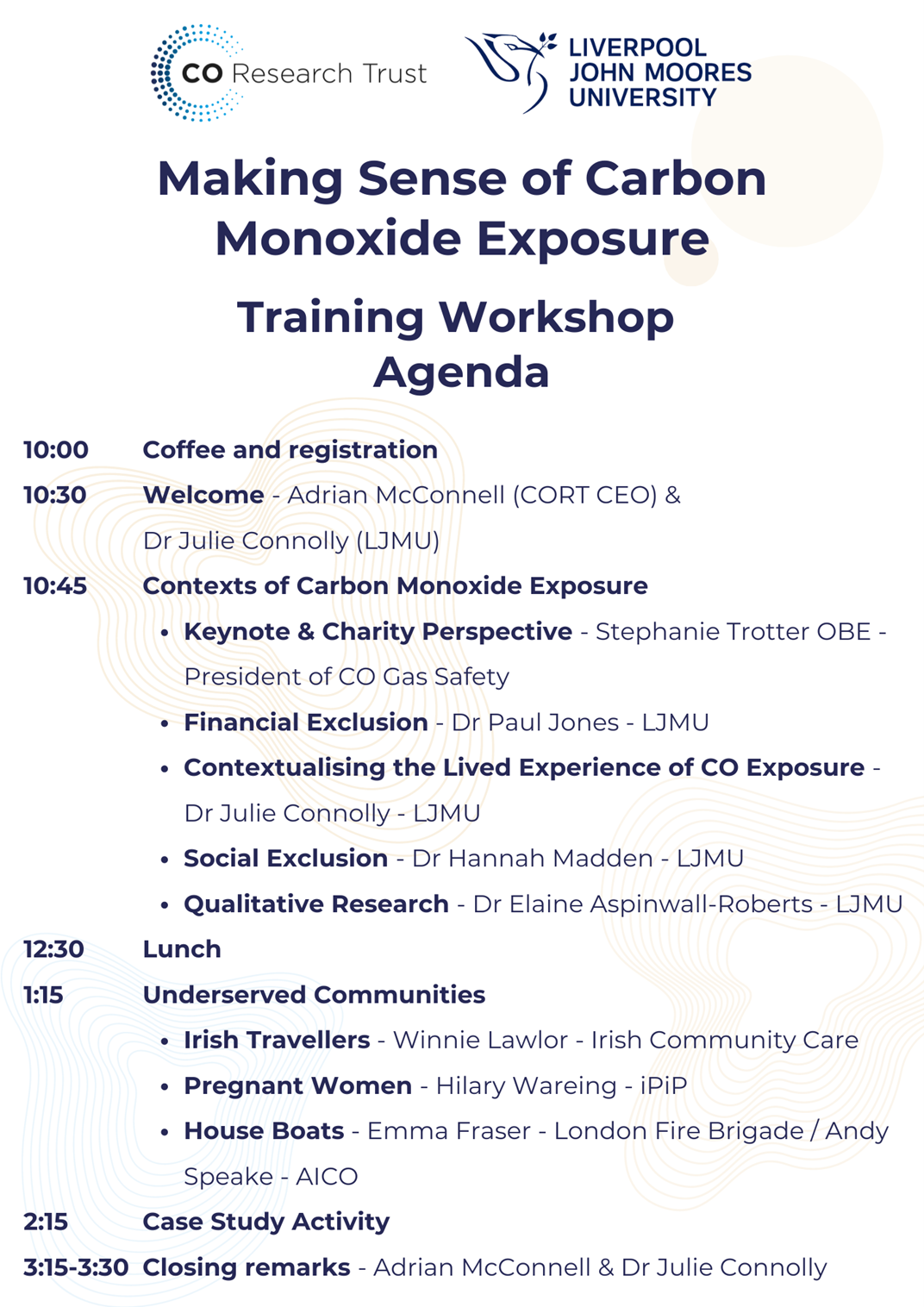Location: Macmillan Room, Portcullis House, SW1A 2JR
Chair: Were Hobhouse MP
Along with other speakers, Stephanie Trotter was asked to give a short talk.
Talk by Stephanie Trotter, OBE, President & Director CO-Gas Safety
I have run the independent registered charity since 1995, helped by other voluntary directors/trustees.
We work to raise awareness of the dangers of carbon monoxide (CO) and other gas dangers.
We also help victims and their families and work to prevent deaths & injuries from unintentional CO.
Thank you very much indeed for inviting me to speak today. Our aims are simple and haven’t changed much in 30 years. Survivors & families told us stopping deaths and injuries from CO REQUIRES AWARENESS of CO & TESTING for CO.
A home many look perfect, but carbon monoxide can kill or maim for life.
Carbon Monoxide is a deadly gas produced as a result of combustion of any carbon fuel – gas, coal, oil, petrol, diesel or wood. Give the flame enough oxygen and CO2 is produced. Not enough and CO is produced.
CO – 1 atom of carbon to 1 of oxygen. Lethal under 2% in air.
CO2 – 1 atom of carbon to 2 of oxygen. Lethal around 5% in air. I’m not an expert in CO2.
CO injures or kills when it leaks from a faulty chimney or flue – also for example a cooker or heater which emits into the living space.
CO cannot be sensed using human senses – under 2% of CO in air can kill in less than 3 minutes. On HSE website.
Firefighters talking about smoke, which has CO in it, describe three breaths. At the first, you don’t think there is anything wrong, at the second you suspect there might be but by the third you can’t move. Testing you & me – people – survivors, is unreliable because CO leaves the breath and blood quickly, yet continues causing further injury even after the survivor is removed from the CO.
Nor does testing survivors IDENTIFY the lethal appliance.
But you can test for CO in air and identify lethal appliances with a flue gas analyser.
More of that later from Jonathan Kane.
You can prevent CO by proper installation and regular maintenance including chimney sweeping but this is expensive.
Can you rely on a CO alarm? They only cost £15 to £20 – We say NO
Firstly, alarms don’t PREVENT exposure to CO.
WHO guidelines are no more than 3.5 PPM of CO over 24 hours.
CO alarms save lives but EN50291 certified alarms don’t alarm until detecting 30 PPM of CO for 2 hours although higher CO will cause an alarm in less time.
Secondly, alarms don’t IDENTIFY the emitting appliance.
What happens next is even worse – the emergency service we call for help has no mandatory duty to test for CO. Why not?
Nor do registered gas engineers have a specific legal duty to test for CO before then after, their work as an impartial check on safety.
That’s why Zoe Anderson, daughter of multi-millionaire Chris Anderson of TED talks, died of CO aged 24 in 2010 in the family home in Bath – The flue had not been connected to her boiler by a Gas Safe Registered Engineer – a simple test would have put this right in seconds.
Ofgem, the regulator, has statutory duties towards raising awareness of CO and towards customers in vulnerable situations e.g. those on the Priority Services Register (sick, old, poor disabled etc.).
BUT we are all are vulnerable to CO, however healthy, wealthy or wise.
Ofgem has recognised this – it’s given £171 million to the gas emergency service for services beyond the meter – so some testing for CO is happening.
But the gas emergency service uses visual signs to decide whether to test for CO …. yet CO cannot be sensed using human senses….
Also, data so far seen by us does not show CO parts per million being recorded.
Consequently, if few homes are tested properly for CO, the medical community think CO is rare – Yet they react when they see PPM of CO written down, saving patients from endless tests, disbelief, misdiagnosis & a waste of NHS funds.
Our 30 years’ experience and university research shows CO is NOT rare.
Two universtiy studies found 20% of households to have 50 PPM of CO and above.
Quite simply, we need tests for CO in homes or workplaces whenever practicable.
CO-Gas Safety is lobbying for 3 mandatory duties: –
1. First – all engineers working for the gas emergency service, performing regular installation, maintenance or gas safety checks must test for CO whenever practicable and record results for public review.
2. Second – all heating and cooking engineers & sweeps of carbon-based fuels must be registered by law as gas engineers.
3. Third – there must be a duty to help survivors & families by finding out why & how CO occurred to prevent exposure to this deadly gas next time.
Now Jonathan Kane will outline how technology has made it straightforward to test for CO & record data
© Copyright 2025 CO-Gas Safety




